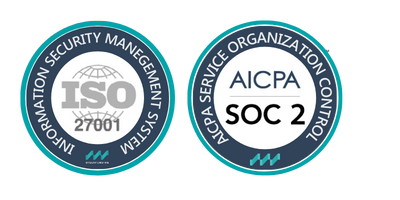How to tackle turbulence in the supply chain.
So far the 2020s has not been the smoothest of rides. We may be just a few years in, but it’s already felt pretty bruising. Many of the structures we rely upon unquestioningly, have actually proven far from secure. For years we’ve taken for granted that global supply chains will provide for modern life – ensuring the shelves are stocked day and night, yet suddenly things don’t feel quite so sure.
The grenade effect of the pandemic on supply chains was felt by everyone – from the panic buying of PPE, to queues round the block for loo roll – the tried and tested systems were not as resilient as we’d all thought. But as the shock of 2020 receded and businesses adapted, a fresh barrage of storms (both socio-economic and actual) have continued to strain supply chain resilience to breaking point.
And what if more turbulence lies ahead? It seems unlikely that the current market instability will settle overnight. If the past few years have taught us anything, it’s to expect the unexpected. The 2020s have more to throw at us yet. But is your supply chain ready for the onslaught?
Post-pandemic problems
In 2021 the grounding of the Ever Given and the log jams it caused were sobering reminders that all supply chains, even the most established, are vulnerable to elements beyond their control.
This is nothing new. Building contingency into supply chain management has always been part of the process.
But never in living memory has the world thrown up such a cocktail of challenges in one go. Covid kicked things off with the impact of lockdowns, port closures and varying regional restrictions – throwing supply chains into turmoil, while the accelerated shift to online, drove businesses to adapt or die.
And as the tectonic plates of commerce were moving, more obstacles lay ahead. Global weather events and manufacturing delays were swiftly followed by the war in Ukraine and the huge inflation spikes of 2023. Small wonder then that supply chains have been reeling.
But what if businesses are missing a trick? What if they could use technology more effectively – helping them foresee problems coming down the line, to predict outcomes before they arise? What if they could use it to embed greater resilience at all levels?
Surely this has never been more important.
SMEs – asset or liability?
The trouble is that large firms, typically the powerful players in any supply chain, see their smaller counterparts as the weakest links.
And it is true that SMEs are often the most vulnerable element of any supply chain, more financially exposed than their larger counterparts. But it is also true that SMEs are vital to a huge number of supply chains (with 77% of smaller businesses in the UK part of supply chains).
The temptation to corner SMEs out of supply chains and replace them with larger providers could be counterproductive for everyone.
SMEs can offer huge advantages, benefiting the entire supply chain. Often the most agile players in any market, SMEs can provide the kind of flexibility on price, turnaround, and ways of working that a larger company could never offer. Look at the way the NHS turned to SMEs during the early days of the pandemic when they faced challenges sourcing enough personal protective equipment (PPE).
SMEs can also be far more innovative in their approach and have the kind of solid customer relationships that larger companies can only dream of.
So how can companies procuring their services have full confidence in their ability to deliver on time and on budget, scaling up production when it is needed?
How to overcome the issues
The answer is to bake in resilience and contingency throughout the supply chain, and to do this by increasing visibility. In other words – making sure you have a clear view and thorough understanding of every business in your supply chain and its position in its respective markets.
Advanced technological and AI tools that offer this clear view up and down the supply chain can help companies identify issues early. This allows them to co-ordinate actions with other businesses and nip any problems in the bud.
The right tool can embed resilience into a supply chain helping companies:
- Identify issues early – with the ability to assess the financial state of any SME in the supply chain, companies can spot potential issues before they present and guide the SME or diversify as needed.
- Make accurate predictions – with greater oversight, companies can spot market trends and make the necessary contingencies.
- Speed up decision-making – with the ability to collate and organise vast quantities of data at speed, this tech can provide valuable insights, helping companies to act quickly.
- Prevent bottlenecks – greater visibility of the whole supply chain means that companies can plan adequate contingencies or adjust their position.
- Be proactive – the ability to predict potential problems allows companies to target resources more effectively and manage any potential disruptions in a more proactive manner.
- Build resilience into supply chain – the ability to spot struggling SMEs further down the chain means that larger businesses can intervene to support them, improving relations and embedding the kind of supply chain resilience that benefits everyone.
In a recent survey of supply chain organisations by Gartner, 61% of respondents claimed that technology was a source of competitive advantage with many identifying emerging technologies as critical areas for investment.
The way forward
The Covid pandemic shone a spotlight (more like a fog-light) on weaknesses in the supply chain like never before. According to a McKinsey survey, 73% of supply chain executives experienced problems in their supplier base and a full 100% endured production and distribution problems.
And the pandemic also forced a shift in attitudes. The increasing automation of the supply chain has been underway for years, but post Covid, this is motivated more to mitigate risk than to promote financial performance. However unsexy it may sound, risk mitigation is now front and centre of the corporate world.
Which is why co-ordination up and down the supply chain is so important. When one or other parts of the chain is under threat then the whole chain could suffer the consequences.
As the Federation for Small Business (FSB) reported, effective relationships within the supply chain mark out the most productive businesses. And digitization can give companies the insight to strengthen and grow those relationships in the most effective way possible.
The 2020s may have got off to a rocky start but by choosing the right tools, companies can take action at an early stage, heading off any problems before they arise – building resilience into all levels of the supply chain and helping to future-proof it for whatever the rest of the decade might throw at us!
To find out how Wiserfunding’s solutions can enhance your insight into your supply chain click here.
SIMILAR POSTS

Key Credit Risks From the IMF’s Global Financial Stability Report
Lending Into Fragility: Key Risks From the IMF’s Global Financial Stability Report For lenders navigating deteriorating credit conditions, the IMF’s [...]

Revolutionising SME credit risk assessment with Wiserfunding and KUKE partnership
In a groundbreaking move that promises to redefine the landscape of SME credit risk assessment, the partnership between KUKE and [...]

The future of export credit: Leveraging tech & intelligence for better risk assessment
The landscape of export credit, a critical component of global trade, is undergoing a transformative shift. This change is driven [...]



